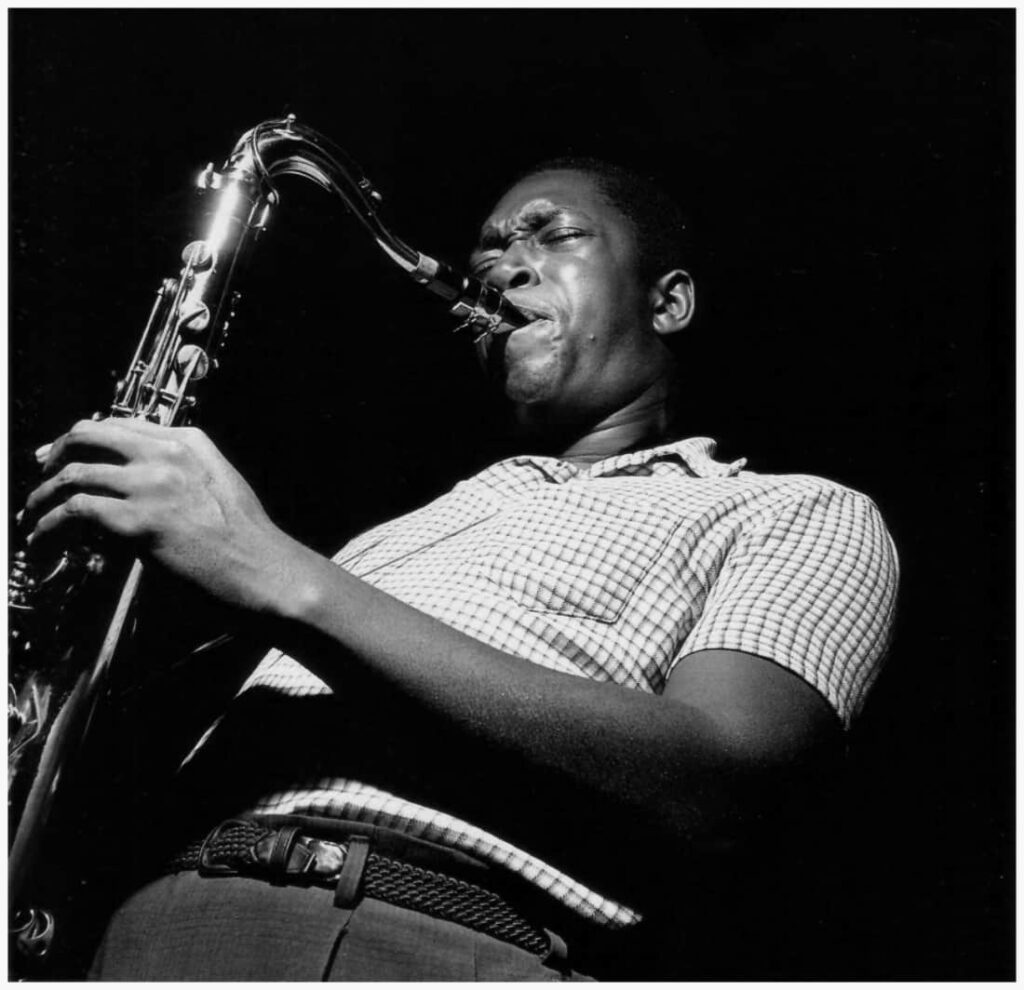Dive into the Power & Passion of ‘Tenor Madness
In the vast panorama of jazz, Sonny Rollins’ “Tenor…
In the pantheon of jazz, few albums have left a more indelible mark on the genre than John Coltrane‘s “Giant Steps.” It’s a work of staggering virtuosity, a testament to the prowess of the musicians involved, and a milestone in Coltrane’s illustrious career.

“Giant Steps” comprises a series of innovative compositions, exploring the limits of the musicians’ abilities and creativity. The album showcases Coltrane’s evolving style, including his signature “sheets of sound,” which would come to define his later works.
The album was recorded during a few pivotal sessions in 1959, under the Atlantic Records label. The recording took place at the legendary Atlantic Studios in New York City, with some of the most talented musicians of the time. Interestingly, Coltrane recorded “Giant Steps” almost concurrently with his work on Miles Davis‘ iconic “Kind of Blue,” a testament to his remarkable productivity and creative energy.

John Coltrane, the visionary behind “Giant Steps,” was already an established saxophonist when he recorded the album. His impressive career highlights include stints with Dizzy Gillespie, Johnny Hodges, and Thelonious Monk. Coltrane’s contributions to “Giant Steps” are nothing short of mesmerizing, as he navigates the album’s complex harmonic structures with ease and grace.

On piano, Tommy Flanagan brings his delicate touch and remarkable dexterity to the project. As a respected figure in the jazz community, Flanagan had previously worked with artists like Ella Fitzgerald and J.J. Johnson. His contributions to “Giant Steps” are critical, providing a harmonic foundation for Coltrane’s intricate melodies.

Paul Chambers, the bassist on “Giant Steps,” was a giant in his own right. Having played with legends like Miles Davis and Cannonball Adderley, Chambers was a master of his instrument. On “Giant Steps,” his innovative bass lines drive the rhythm section and support the album’s harmonic structure.

Art Taylor, the drummer for the sessions, was a force to be reckoned with. With a resume that boasted collaborations with Bud Powell and Sonny Rollins, Taylor was no stranger to greatness. On “Giant Steps,” he provided the rhythmic backbone and dynamic intensity that propelled the music forward.

The title track, “Giant Steps,” is a breathtaking tour de force that epitomizes the essence of the album. Coltrane’s astonishing solo, marked by his signature “sheets of sound” technique, captivates listeners, and sets a remarkable precedent for the entire record. Flanagan’s nimble piano work, initially overwhelmed by the song’s complexity, now stands as a testament to his adaptability and prowess. The rhythm section, with Paul Chambers on bass and Art Taylor on drums, provides impeccable timing and a solid foundation, accentuating the brilliance of Coltrane’s pioneering harmonic concept. Altogether, the synergy between the musicians elevates “Giant Steps” to a transcendent level, solidifying its place in jazz history.

“Cousin Mary,” a hard bop gem, exemplifies Coltrane’s rich melodic sensibility and his penchant for captivating compositions. The tune is built upon a memorable, blues-inflected theme that highlights Coltrane’s ability to weave intricate melodies with emotional depth. Each musician shines in their respective roles, with Chambers’ robust bass lines and Taylor’s driving drum patterns providing a solid rhythmic foundation. This rhythmic backbone enables the dynamic interplay between Coltrane’s expressive saxophone and Flanagan’s elegant piano work. As they exchange ideas and solos, the musicians display a deep mutual understanding, resulting in a musical conversation that is both engaging and inspiring. This spirited collaboration adds another dimension to “Cousin Mary,” further solidifying its place as a standout track on this groundbreaking album.
My personal favorite, “Naima,” is a mesmerizing ballad showcasing Coltrane’s emotive playing and deep musical expression. The haunting melody, composed for his then-wife Naima, carries a sense of yearning and vulnerability. Flanagan’s lush chords, Chambers’ warm bass tones, and Taylor’s gentle brushwork create an atmosphere of introspection and beauty. Coltrane’s soulful phrasing and passionate delivery evoke a sense of longing and deep emotion, demonstrating his versatility as an artist and ability to connect with listeners on a profound level. “Naima” stands as a testament to the transformative power of music and Coltrane’s unique artistic vision.
“Mr. P.C.,” the album’s final track, is a bluesy, up-tempo romp dedicated to the late bassist Paul Chambers. This energetic closer showcase the musician’s exceptional skills, as Coltrane’s fiery solo and intricate phrasing intertwine with Flanagan’s spirited piano work. Chambers delivers a powerful, melodic bass solo that demonstrates why he was so revered, while Taylor’s masterful drumming propels the song with his propulsive rhythm and dynamic accents. The chemistry between the musicians is palpable, and their collective virtuosity on this track provides a fitting conclusion to this groundbreaking album.
The musical style of “Giant Steps” is characterized by its advanced harmonic concepts, which would become a hallmark of Coltrane’s style. The album explores themes of innovation, virtuosity, and the search for new modes of expression within the jazz idiom.
Upon its release, “Giant Steps” was met with both awe and confusion. Critics and musicians alike marveled at Coltrane’s technical prowess, but some struggled to grasp the album’s complex harmonic language. Despite these initial reactions, the album quickly gained recognition as a groundbreaking work and solidified Coltrane’s status as a jazz giant.
Today, “Giant Steps” is revered as a seminal recording in the history of jazz. Its intricate compositions and virtuosic performances have influenced generations of musicians, and the album remains a touchstone for those seeking to push the boundaries of the genre. The album’s continued significance lies in its ability to challenge and inspire listeners, as well as its representation of Coltrane’s unique vision and unwavering commitment to his art.
In conclusion, John Coltrane’s “Giant Steps” stands as a monument to the limitless possibilities of jazz. The album’s innovative harmonic structures, dazzling solos, and the undeniable chemistry between its musicians have secured its place in the annals of music history. A testament to the power of creativity and the human spirit, “Giant Steps” will undoubtedly continue to captivate and inspire future generations of musicians and listeners alike.